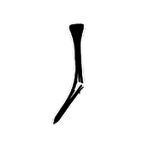Dial in Your Distance Wedges
7 minNearly everyone can get the first ingredient right. It just takes a range finder (or a little practice pacing off yardages) and some experience judging the effects of wind, elevation, different types of lies, etc.
A good number of players have reasonable technique. To use a baseball analogy, poor distance wedge players throw pop-ups to second base. Better wedge players are like strong-armed catchers, throwing low darts to second base. In this video, Titleist staff member Mark Blackburn will show you how to throw bullets using technique that varies slightly, but significantly from your stock iron swing.
Only a small number of players with skillful technique take the time to learn how far the ball flies with a few different lengths of swing. Most try to improvise, swinging "somewhere" short of a full swing. And hardly anyone calibrates a few different swing lengths with each wedge in their bag. And yet, as Mark shares, this is precisely what you need to do in order to hit wedges close.
The good news? It's not that hard to do. Follow Mark's keys for technique to build a simple, repeatable swing that's driven by rotation and then spend half an hour or so charting your distances as prescribed. Follow these steps for each wedge that you carry:
• Hit 3-5 balls with your half wedge swing (7:30 - 9:00 on the clock face as Mark describes it). Use a range finder or pace off the average distance that those shots flew with your half-wedge technique. Using a permanent marker, write that number down on the shaft of the wedge.
• Using the same club, now hit 3-5 balls with your 3/4 wedge swing (9:00 - 10:30 on the clock face as Mark describes it). Use a range finder or pace off the average distance that those shots flew with your 3/4-wedge technique. Write that number down on the shaft of the wedge, just above the half-wedge distance.
• Using the same club, now hit 3-5 balls with your full wedge swing (10:30- 12:00) on the clock face as Mark describes it). Use a range finder or pace off the average distance that those shots flew with your full wedge technique. Write that number down on the shaft of the wedge, just above the 3/4-wedge distance. You now have three distances you can refer to out on the course.
• Lather, rinse, repeat - Repeat the process with your other wedges. You'll now be armed with an entire matrix of distances that you can refer to on the course. You won't need to guess or improvise. Just look at your shaft band and match the shot to the wedge and the swing length that's needed.

























